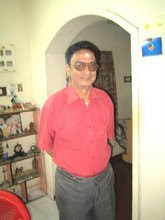
EVOLUTION OF NATARAJA
The dancing god is known as Nataraja in Southern India, Nateshwara, Nritteshwa, Natakeswara, and Bhairvara Narteshwara in Eastern India, Bangladesh, and the Far East like Cambodia and Vietnam.
When Buddhism started declining, Lord Shiva as a prime deity gained prominence. Various attributes were added to the Pashupathi of the pre-historic times. Ashoka’s time refers to him as Adinatha. Attributes like Rudra and Agni were added to the Lord during the Sunga period. Agni is considered to be the bull, which is Shiva’s Nandi.
Lord Shiva came to be depicted as a dancing Lord during the time of scholar Bharata from Kashmir (2 BC to 2 AD). Excavations from the Sunga age reveal Shiva as aVeena Dakshinamoorthy, which means a teacher of performing arts including dance.
Terracotta from the Gupta period found in Gaya revealed Lord Shiva with flying tresses and digambara body with a sword as also the subsequent excavations from Guna and Kosh in Madhya Pradesh repeat the same styles, but the Nataraja sculptures at Nalanda (Gupta period) show elongated ears and a modest “jata”.
Excavations from 5th to 8th centuries AD in Bengal, Orissa, Madhyra Pradesh, and Rajasthan do not reveal the flowing Ganga or the crescent moon unlike sculptures from subsequent excavations. Slow buildup of Nataraja’s accessories is worth noticing.
Several arms were added to Nataraja by the 6th century as revealed from excavations from Orissa, Bengal, and Karnataka (Badami and Aihole). The arms carry serpent in the two upper arms. The other hands show objects like damaru, kapala, akashmala, kartri, trishoola, and a ball of fire.
Movement of saints from Kashmir to the south in the 6th century AD had its impact in the images in the south also.
This is an interesting study of excavations over a long period of time, but the Lord Dance denotes the essence of the Indian philosophy of the cycle of creation and the eternal soul.
Source: The Hindu February 1, 2009
Images: Google






















